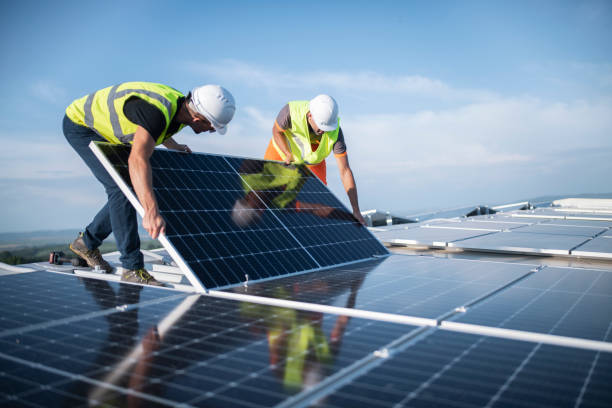Applying for international solar funding: a step-by-step guide
Applying for international solar funding can open doors for rooftop, community, and utility-scale renewables projects. This guide outlines the main funding types, common eligibility rules, and practical steps to prepare applications for grants, subsidies, and financing from global and local sources. It is designed to help project owners, community groups, and small developers understand the process and next steps.

Applying for international solar funding requires clarity about the funding type, realistic cost estimates, and a structured application. Whether you are pursuing rooftop incentives, community project grants, or larger renewable subsidies, prepare documentation that clearly shows technical feasibility, social or environmental benefits, and sound financial planning. Many funders assess eligibility against policy goals such as emissions reduction, energy access, and community impact, so align proposals with those priorities.
What is solar funding?
Solar funding covers grants, rebates, subsidies, concessional loans, and investment for renewables projects. Grants and rebates reduce upfront costs for rooftop systems or community installations, while concessional loans and guarantees lower financing costs for larger projects. International funders may finance feasibility studies, technical assistance, and capital expenditure. Understanding the difference between non-repayable support (grants) and repayable finance (loans) helps you choose the most suitable channel for your project size and ownership structure.
How do incentives and rebates work?
Incentives and rebates are typically offered by national programs, utilities, or donor-funded initiatives and aim to lower the net system cost for end users. These programs may cover a fixed amount per kilowatt installed, a percentage of system cost, or performance-based payments tied to energy production. Eligibility often requires meeting equipment standards, using certified installers, and complying with local interconnection rules. Check local services and program portals in your area for up-to-date guidance and required paperwork, including proof of installation and manufacturer specifications.
How can you access financing options?
Financing routes include commercial loans, green bonds, concessional loans from development banks, and blended finance that mixes grants with loan capital. For community and small-scale projects, crowd-funding, community finance models, and partnership with local NGOs can provide early-stage capital. For larger projects, approach international development banks or climate funds after completing technical and financial feasibility work. Prepare clear cashflow models, a budget breakdown, and risk mitigation strategies (e.g., insurance, power purchase arrangements) to demonstrate bankability.
Who is eligible?
Eligibility varies by funder and program. Residential rebates usually require owner-occupied properties and certified installers. Community programs may prioritize projects that increase local energy access or provide social benefits. International funders often require alignment with development objectives, such as poverty reduction or resilience. Typical eligibility checks include legal entity registration, financial statements, environmental and social safeguards, and technical documentation. Early engagement with program officers or national focal points can clarify requirements and reduce wasted effort.
How to prepare a strong application?
A competitive application combines clear technical plans, cost estimates, impact metrics, and robust governance. Include a project summary, timeline, budget, expected energy generation, and how the project supports policy goals like emissions reduction or increased access. Provide evidence of local stakeholder support and letters of intent for grid connections or land access when relevant. Ensure all documents are complete, formatted per guidelines, and submitted before deadlines. Consider hiring an experienced grant writer or consultant for complex international submissions.
Funding: cost and provider comparison
Real-world cost and funding structures vary widely by provider and project type. Below are typical provider types and general cost estimations to help orient planning. These figures are ranges and examples intended to reflect typical program scales and common grant/loan structures; precise terms depend on the funder and project specifics.
| Product/Service | Provider | Cost Estimation |
|---|---|---|
| Residential rooftop rebates | National/local solar rebate programs | Typical rebates: $500–$5,000 or 5–30% of system cost (varies by country and program) |
| Community solar grants | Green Climate Fund, World Bank small grants | Project grants commonly range $100,000–$5,000,000 depending on scale and country eligibility |
| Utility-scale project financing | European Investment Bank, African Development Bank | Financing for MW-scale projects often runs from $1M to $100M+ (loan or blended finance) |
| Technical assistance and feasibility grants | USAID, IRENA, regional development agencies | Grants for studies and capacity: $10,000–$500,000 |
| Low-interest loans / loan guarantees | KfW, EIB, national development banks | Loan financing may cover 50–100% of capex with interest subsidies; amounts depend on project size |
Prices, rates, or cost estimates mentioned in this article are based on the latest available information but may change over time. Independent research is advised before making financial decisions.
Conclusion
Applying for international solar funding is a multi-step process that benefits from early research, clear alignment with funder priorities, and strong technical and financial documentation. Use the comparison above to identify relevant funders, prepare a realistic budget, and seek local guidance to meet eligibility rules. With careful preparation and targeted outreach, projects from rooftop systems to community and utility-scale installations can find suitable support from a mix of grants, rebates, and concessional finance.






